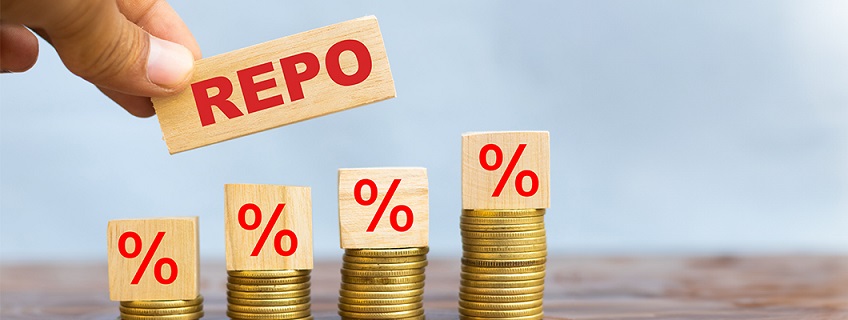
What is the Effect of Repo Rate on Loan?
Posted on Thursday, March 28th, 2024 | By IndusInd Bank
If you’ve taken or are planning to take a personal loan, you’ve probably heard the term “repo rate” being tossed around—especially when the Reserve Bank of India (RBI) announces monetary policy updates. But what exactly is the repo rate, and how does it influence the cost of your loan?
In this blog, we’ll break down what the repo rate is, how it affects personal loan interest rates, and what rising or falling rates mean for your EMI and financial planning.
What is the Repo Rate?
The repo rate is the specified rate of interest at which the RBI lends its money to all the commercial banks in India against their treasury bills. In other words, the repo rate is the specific rate at which any commercial bank borrows money from the Reserve Bank of India. The RBI provides liquidity to all commercial banks under the liquidity adjustment facility (LAF).
The RBI’s Monetary Policy Committee (MPC) determines the repo rate after assessing various factors and key economic indicators. MPC consists of six members, including the RBI governor, and reviews the repo rate in bi-monthly meetings. Changes are made in the rate to achieve money policy objectives, such as controlling inflation. Raising the repo rate makes borrowing expensive for banks which in turn reduces the money supply. It also encourages savings that help curb inflation.
Factors Affecting Repo Rate to Impact Personal Loan
The RBI adjusts the repo rate primarily to manage inflation and stimulate economic growth. Here are key factors that influence repo rate decisions:
- Inflation Control: If inflation rises sharply, the RBI may increase the repo rate to make borrowing costlier and reduce spending.
- Economic Growth: To boost economic activity during a slowdown, the repo rate may be reduced, encouraging borrowing and investment.
- Liquidity in the Market: The central bank may tweak rates to manage the money supply in the economy.
- Currency Stability: Sometimes repo rate adjustments are made to stabilize the value of the Indian Rupee in global markets.
These adjustments trickle down to the consumer level, affecting personal loan interest rates.
What is the Reverse Repo Rate?
The reverse repo rate is the opposite of the repo rate. It is the specific rate at which the Reserve Bank of India borrows or absorbs liquidity from any commercial bank against the collateral of government securities. The reverse repo rate also plays a crucial role in RBI’s monetary policy measures. At present, the reverse repo rate is 3.35%.
How Does the Repo Rate Impact the Personal Loan Interest Rates?
Banks and NBFCs often link personal loan interest rates to the prevailing repo rate. This makes them more responsive to any changes made by the RBI.
How Repo Rate Increment Affects Personal Loan
When the RBI raises the repo rate, borrowing becomes more expensive for banks. In response, lenders often:
- Increase personal loan interest rates
- Pass on the additional cost to borrowers
- Offer more stringent eligibility checks or reduce loan approval volumes
Impact on You: If you already have a floating-rate personal loan, your EMIs may rise. New borrowers will likely face higher interest rates, increasing the overall cost of borrowing.
How Repo Rate Reduction Affects Personal Loan
When the repo rate is reduced, borrowing becomes cheaper for banks. Lenders then tend to:
- Lower personal loan interest rates
- Increase the chances of approval for borrowers
- Offer competitive loan terms to attract customers
Impact on You: Your EMIs may reduce if your loan has a floating rate. New borrowers can benefit from lower interest costs and more flexible loan options.
Also Read: 5 important personal loan factors you should consider
Also Read: Who is eligible to apply for a personal loan?
Wrapping Up
Whether you’re planning to borrow or already repaying a personal loan, keeping an eye on the repo rate can help you make informed financial decisions. Even a small change in this rate can significantly influence your loan EMI, overall interest payout, and affordability.
Understanding the repo rate gives you more control over when and how you borrow. So, the next time the RBI announces a rate change, you’ll know exactly how it may impact your wallet.



 Offers
Offers Rates
Rates Debit Card Related
Debit Card Related Credit Card Related
Credit Card Related Manage Mandate(s)
Manage Mandate(s) Get Mini Statement
Get Mini Statement
 categories
categories Bloggers
Bloggers Blog collection
Blog collection Press Release
Press Release


